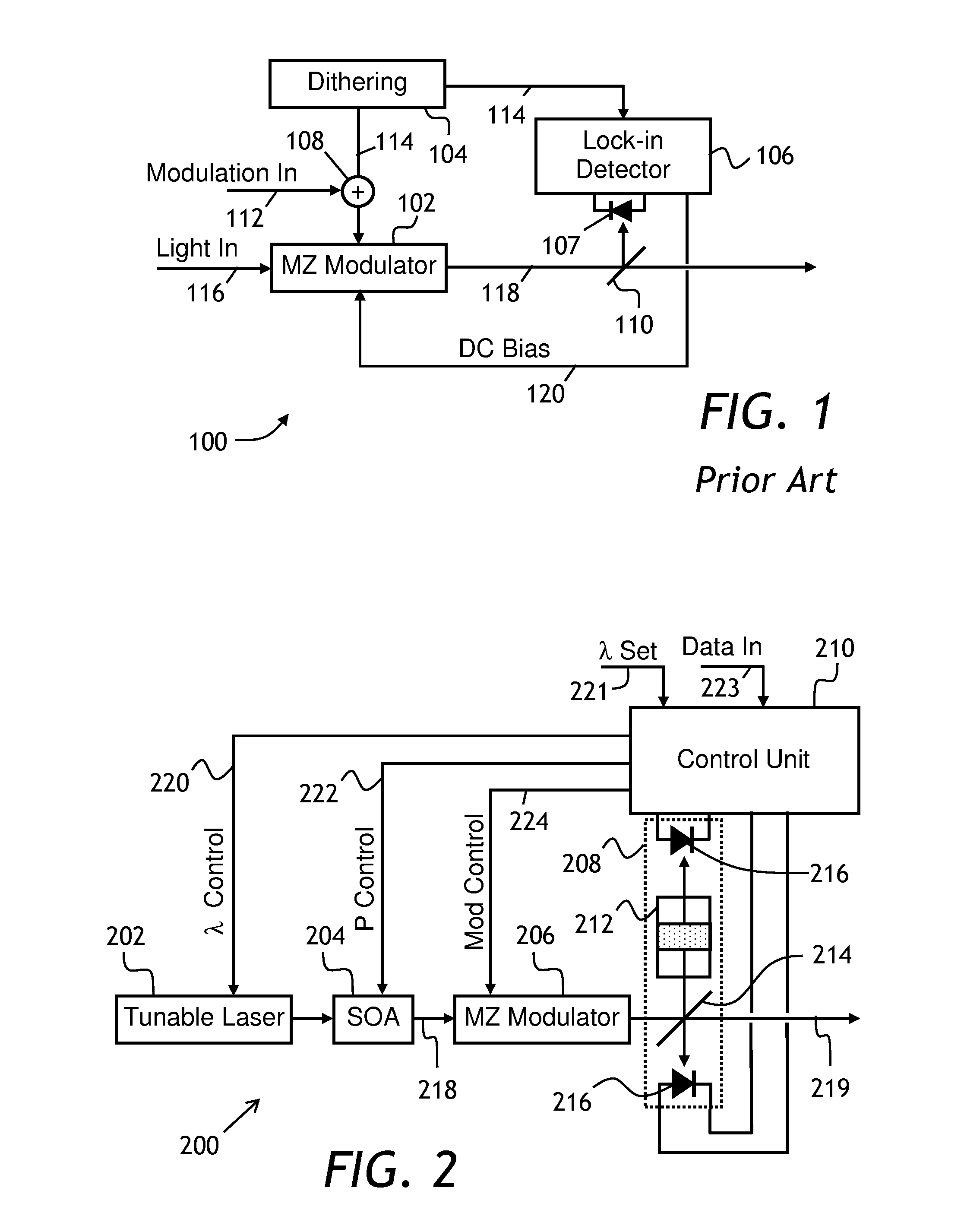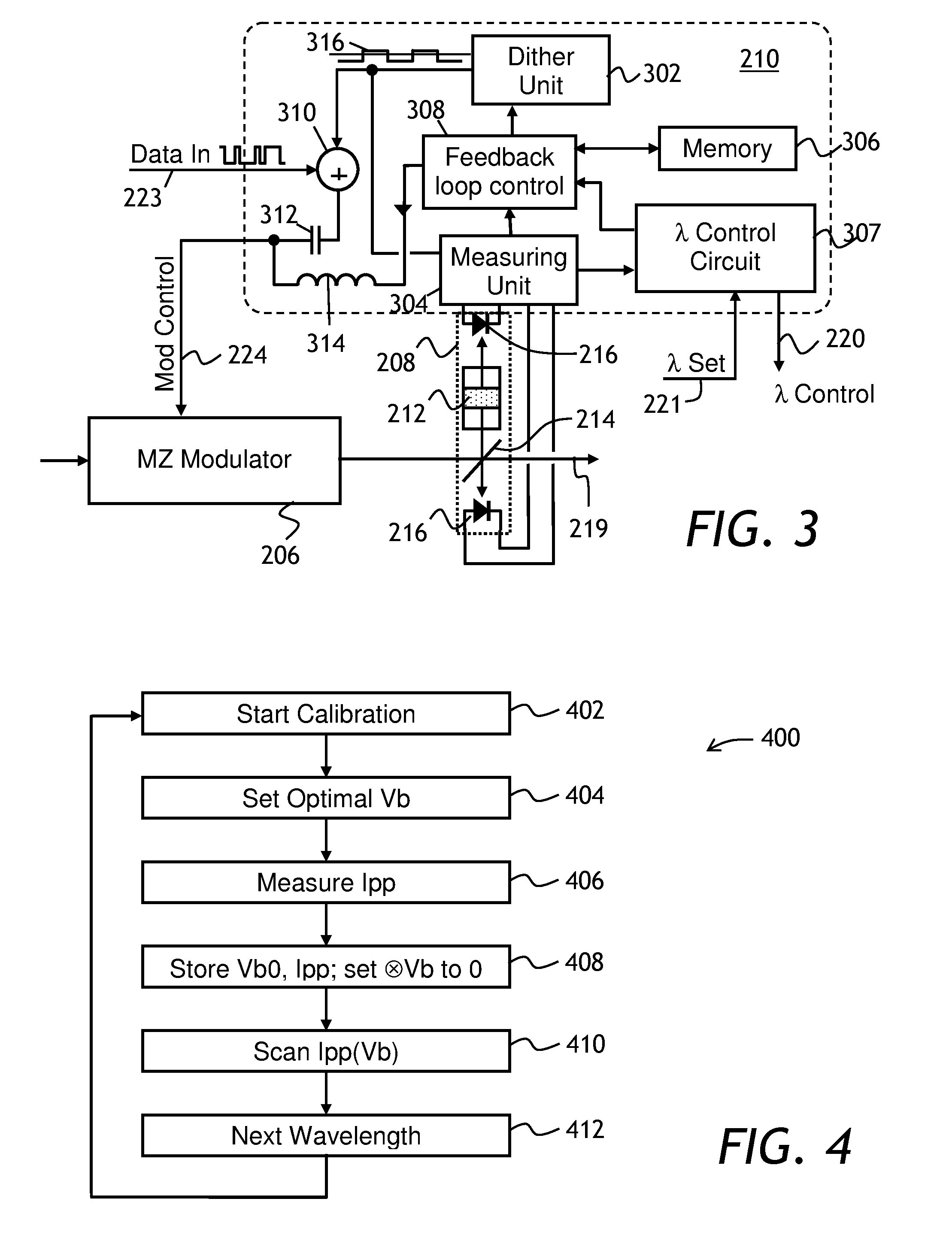Bias control in an optical modulator and transmitter
a technology of optical modulators and bias control, which is applied in the direction of multiplex communication, electrical apparatus, and wavelength-division multiplex systems, can solve the problems that the control system of optical modulators of the prior art is not adapted to control modulators operating at different wavelengths
- Summary
- Abstract
- Description
- Claims
- Application Information
AI Technical Summary
Benefits of technology
Problems solved by technology
Method used
Image
Examples
Embodiment Construction
[0030]While the present teachings are described in conjunction with various embodiments and examples, it is not intended that the present teachings be limited to such embodiments. On the contrary, the present teachings encompass various alternatives, modifications and equivalents, as will be appreciated by those of skill in the art.
[0031]Referring to FIG. 2, a tunable transmitter 200 includes a tunable laser 202, a semiconductor optical amplifier (SOA) 204, a Mach-Zehnder (MZ) modulator 206, a wavelength locker 208, and a control unit 210. The wavelength locker 208 has a Fabry-Perot interferometer or etalon 212, a beamsplitter 214, and two photodetectors 216, preferably photodiodes, for detecting an optical signal reflected from and transmitted through the Fabry-Perot interferometer 212. In operation, the control unit 210 provides a wavelength control signal 220 for tuning the wavelength of the tunable laser 202 to a wavelength set at a wavelength input 221, a power control signal 2...
PUM
 Login to View More
Login to View More Abstract
Description
Claims
Application Information
 Login to View More
Login to View More - R&D
- Intellectual Property
- Life Sciences
- Materials
- Tech Scout
- Unparalleled Data Quality
- Higher Quality Content
- 60% Fewer Hallucinations
Browse by: Latest US Patents, China's latest patents, Technical Efficacy Thesaurus, Application Domain, Technology Topic, Popular Technical Reports.
© 2025 PatSnap. All rights reserved.Legal|Privacy policy|Modern Slavery Act Transparency Statement|Sitemap|About US| Contact US: help@patsnap.com



